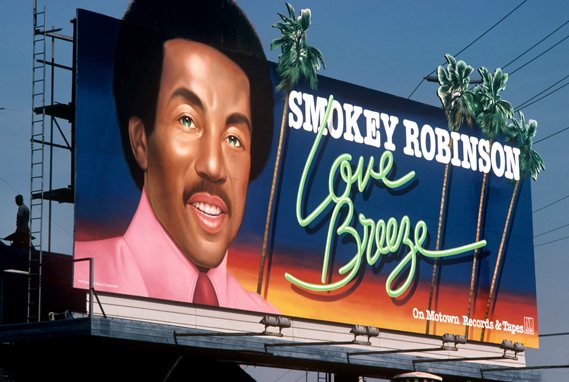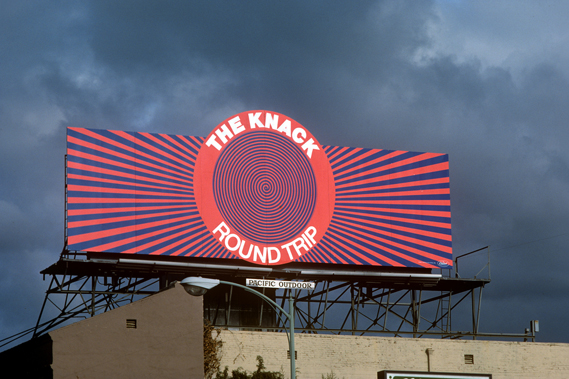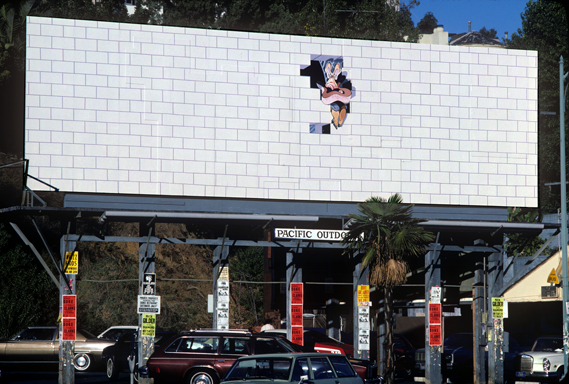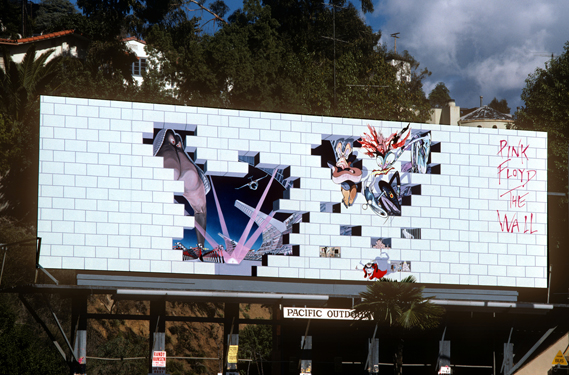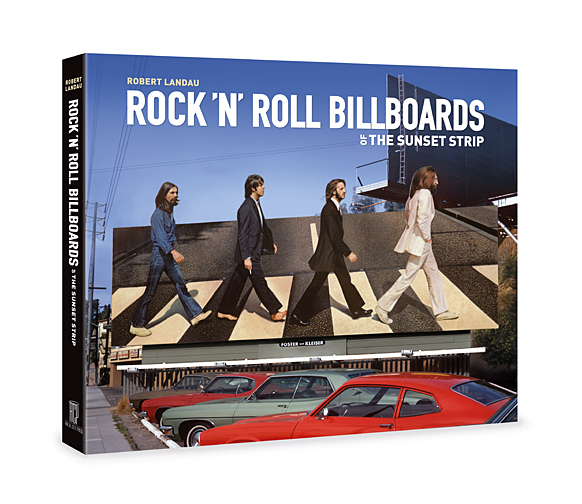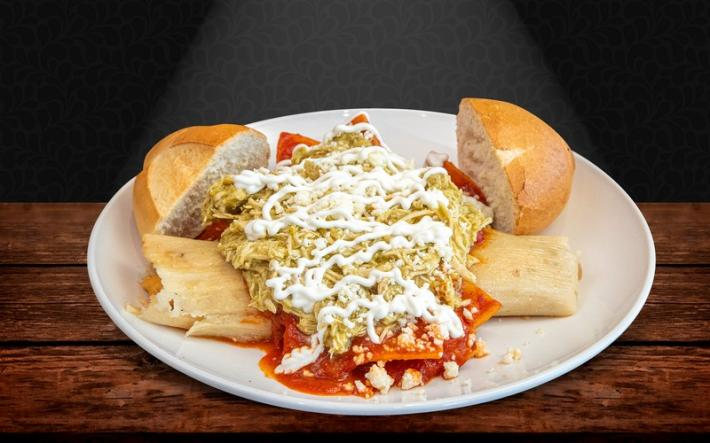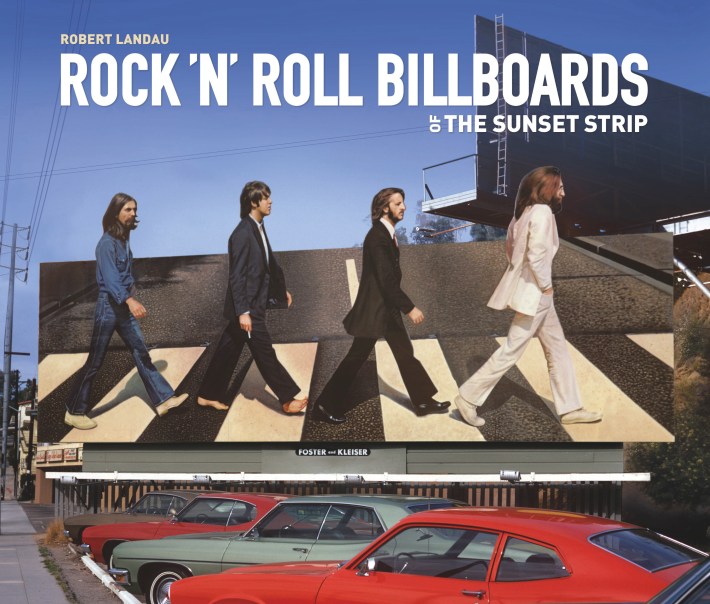
The Sunset Strip was once the epicenter of LA's youth culture, a place where disparate bands of young people could come together, hang out, get high, listen to music, and meet each other. The sound of the time was strictly Rock 'n' Roll and it was being defined by LA bands and packaged by LA-based record companies, who erected giant, temporary monuments to their standard-bearers in the form of beautiful, hand-painted billboards on the Sunset Strip. Born and raised in Los Angeles, photographer Robert Landau grew up near the strip and took some of his earliest photos of the signs that would help define an era. His new book, Rock 'n' Roll Billboards of the Sunset Strip is available now from Angel City Press.
What's your favorite place in LA to get a taco?
Loteria, at the old Farmers Market on Third and Fairfax.
What originally drew you to start photographing the rock billboards of the Sunset Strip?
I was a 16 year old just getting interested in photography and I lived a block above Tower Records. I went out to explore my world and at the time (1969) the Sunset Strip was like a drive-thru gallery with giant artworks depicting all the rockers whose records I was listening to. I noticed the billboards would be painted over with new images every month so I began shooting them to show my friends who lived in other parts of town and never got to see them.
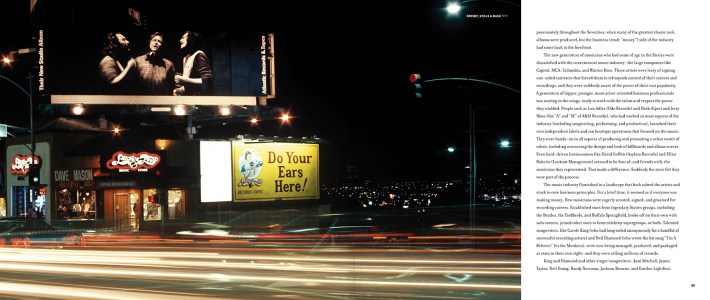
Was there a sense back then of a friendly war between record labels to see who could get the best, most eye-catching billboards up? Who won?
One of the great benefits of putting together the book Rock ‘n’ Roll Billboards of the Sunset Strip (Angel City Press), is that it allowed me to contact and speak with many of the people involved in the creation of the billboards and the artwork displayed on them. I talked to record executives like Jac Holzman of Elektra who signed The Doors, and Lou Adler of Ode Records who was behind some great billboards. I also talked to some of the great graphic artists and photographers of the period and yes in retrospect I would say there was a friendly rivalry to see who could come up with the best imagery. The billboards of that period did not make a lot of sense economically because they were generally only seen by people in the music industry and the artists involved, along with the kids who were frequenting the clubs and record stores. They were talking and bragging to each other and seeing who could create the most “buzz” with a billboard about their current record.
Do you have a personal favorite?
Yes my favorite is a billboard for an Ode Records recording of the rock musical Tommy created by The Who and performed by the London Philharmonic Symphony. It depicted two enormous hyper realistic chrome pinballs that had eyes and seemed to glare down at the passing traffic. There was not a single word of copy on the board so it presented itself as an enigma and made everyone scratch their heads and wonder what it was advertising for several weeks. After a while they added some copy with the title of the record. That image was from a design by Tom Wilkes and commissioned by Lou Adler.

What was the Sunset Strip like back then in general? How did the billboards play into the general scene?
There was a distinct anti-establishment feeling in those days along with a very real generation gap between baby boomers coming of age, and their “square” parents. Issues like drugs and the Viet Nam War were major dividing lines. My generation was very leery of anything that smacked of overt consumerism and commercialism. The Sunset Strip was “the cool place” in LA where young people could hang out and meet. Therefore the billboards like the record album covers they were based on, tread this fine line between art and commercials and tried to define a group or recording artist with imagery that would appeal to this mind set.
Were there pretenders or johnny-come-lately attempts to get in on the rock billboard scene?
There were definitely more than a few of those. Once the billboards became established as a cool thing, everyone in the entertainment field wanted one. They began in 1967 with the Doors and followed through groups like the Beatles, the Stones, Dylan, Hendrix, and all the California sound in the 1970s– Joni Mitchell, Neil Young, The Eagles Jackson Browne. The scene was pretty much done by the early 1980s when MTV arrived and marketing dollars switched from billboards to short videos. Toward the end of that period there was one for a pop singer who went by the name Englebert Humperdink that pretty much summed up all the contriving and manipulative aspects of Hollywood entertainment hucksterism that the 60’s movement seemed to be against.
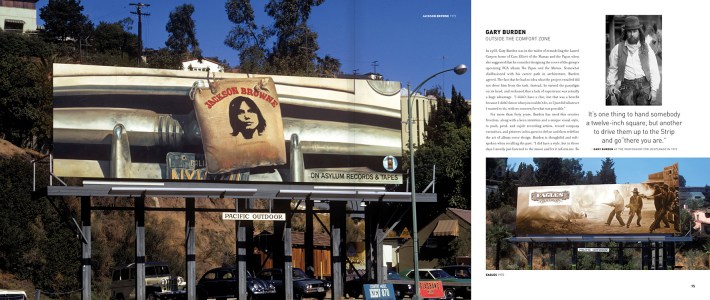
Who were the artist that did the hand-painted billboards?
They were highly trained craftsmen, many with fine arts degrees who were employed by large outdoor advertising companies like Foster and Kleiser that no longer exist. They could turn out a 14 by 48 foot wooden canvas in about 10 days and most people passing them in their cars thought they were large photographs. Some of them exhibited their personal work in galleries. Many of the 60’s Pop Artists drew inspiration form these large commercial paintings.
What equipment did you use the shoot the photos, and where were the negatives stored all this time?
I had an old Nikkormat 35mm camera that was sort of a learners version of a Nikon. Luckily, because I wanted to project the images for friends, I shot Kodachrome transparency film, which is in my opinion one of the best films ever made. The colors have all held up nicely, stored as they were in sleeved sheets in big 3 ring notebooks.
I am still scanning those old slides into digital form.
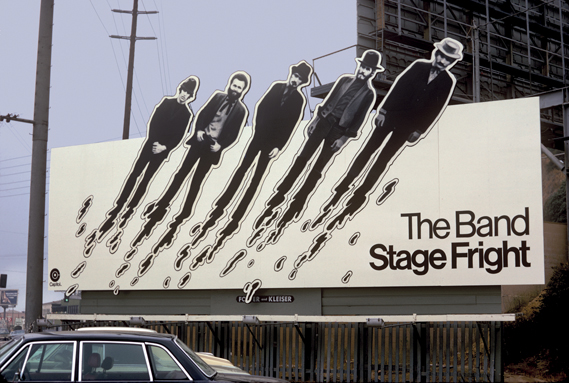
I notice that some of the boards have been tampered with, graffiti'd on, etc. do you consider that these billboards were part of a sort of dialog about Los Angeles, rock n' roll, who mattered, etc. or were they pure advertisements?
A bit of both. Some of the billboards pushed the edge of socially acceptable dialogue, like one for the Rolling Stones record Black and Blue that depicted a kind of sado-masochistic image that was grafittied and quickly removed.
When did the rock n roll billboard era end? Are there distinct stages of the billboard era?
For all intents and purposes it was over by 1982 when MTV established itself.
Do you pay attention to billboards/street posters/etc. now? Seen any that caught your attention recently?
Advertising imagery seems to be in a bit of slump now, but I am sure some new imagination will get to work again soon.
Robert Landau's personal site is available here.

